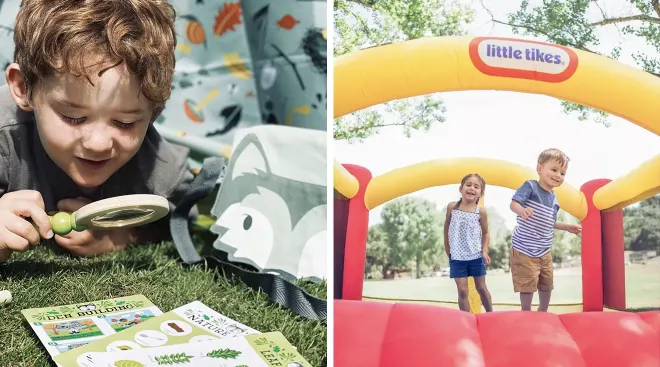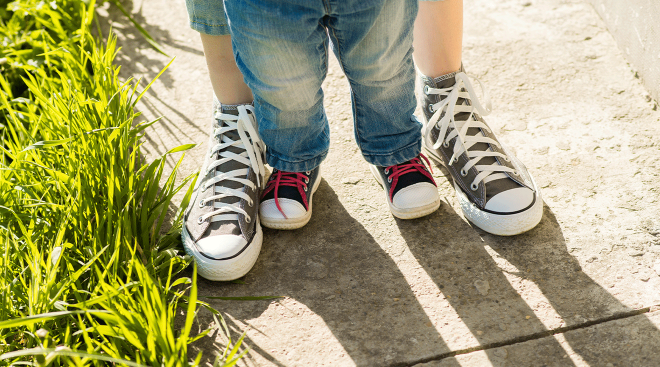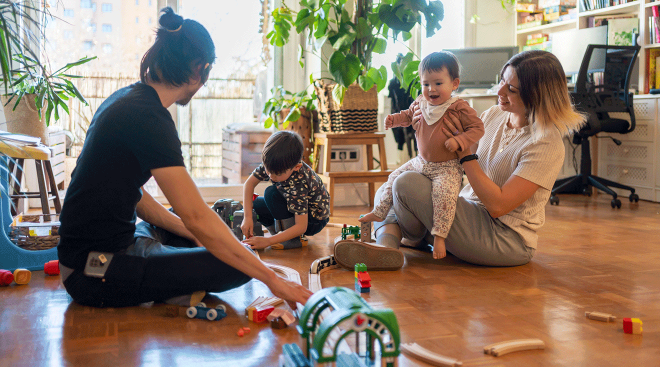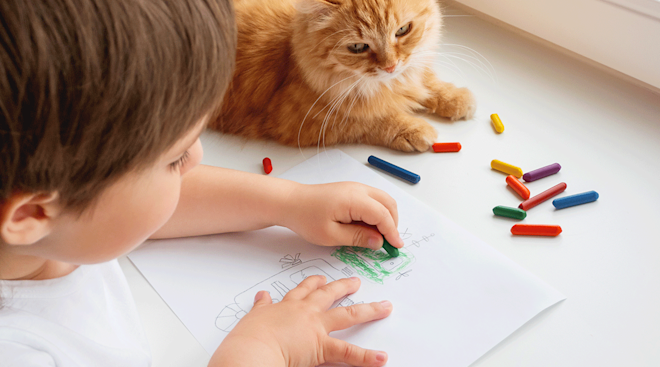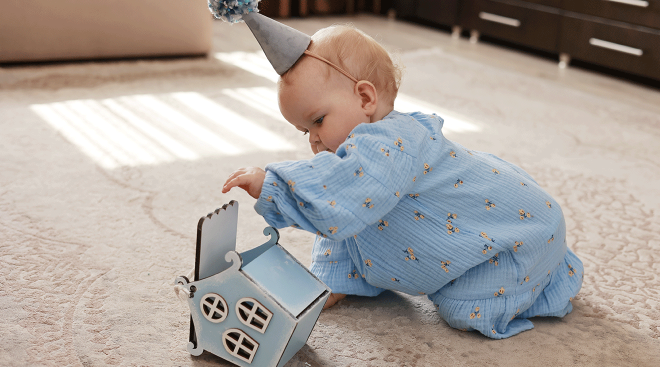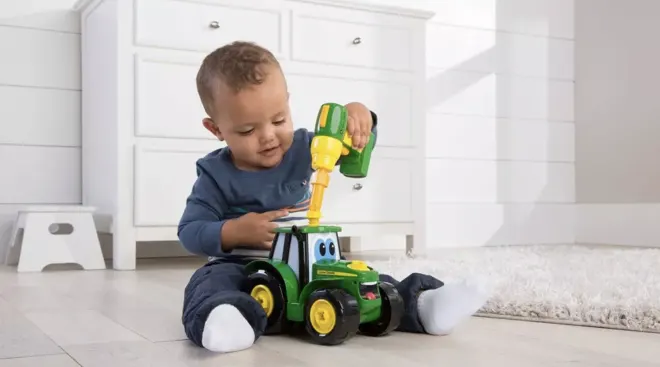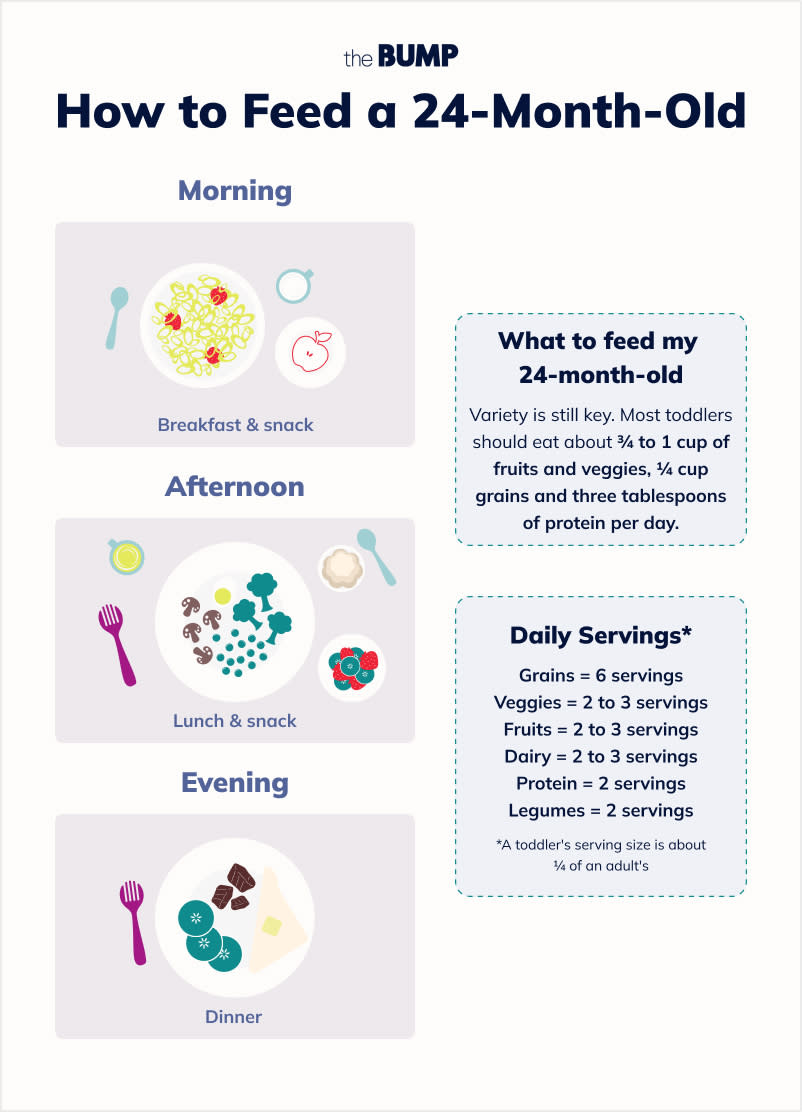Your toddler is 2 years old. Happy birthday!
Your 24-month-old is likely playing pretend, sorting stuff into categories and is hip to simple abstract concepts (like “sooner” vs. “later”). Your toddler is also getting more verbal every day, is sometimes whiny and may be having some separation anxiety. They like to do things for themselves and, of course, can throw a doozy of a tantrum. The fun part: They’re probably big on showing other emotions too, like love and joy, and are absolutely smitten with you.
As your 24-month-old baby continues to grow, you might find their confidence growing too. This can mean becoming braver about trying new things—and about testing your parental limits too.
2-year-old weight and height
Wondering how much should a 2-year-old weigh? Average weight for a 24-month-old is 26.5 pounds for girls and 27.5 pounds for boys, according to the World Health Organization.
How tall is the average 2-year-old? Average height for a 24-month-old baby is 33.5 inches for girls and 34.8 inches for boys.
At the two-year checkup, the pediatrician will weigh and measure your 24-month-old to make sure their growth is following a healthy upward curve on the growth chart.
2-year-old milestones
You’re probably starting to notice that your 24-month-old baby is less of a baby and more of a toddler these days as they check off more and more skills on the list of 24-month-old milestones. Here are some milestones your 24-month-old may have hit or may be working on:
- Motor skills. Your 24-month-old can probably walk up the stairs one foot at a time, walk down the stairs and jump with both feet at once. You’ll notice your 24-month-old is running well and kicking a ball pretty accurately too. Help your child develop their 24-month-old milestones by playing outside with them and going for short walks.
- Speech. Your toddler may be saying 50 words or more, and you can probably understand your kiddo at least half the time now, which should help cut down on tantrums. They may even be saying two-word phrases—but it's not usually worrisome if they aren’t yet. They should be able to point to some pictures in a book when you ask about them, point to at least two body parts when you ask and use a variety of gestures. The pediatrician will probably check for hearing problems if your child isn’t talking as much as expected.
- Teething. A toddler's upper second molars tend to poke through around the second birthday, causing some teething discomfort.
- Potty training. The second birthday is a popular time to start ramping up potty-training efforts if your child is showing signs of readiness. This may include telling you they have to go, wanting their dirty or wet diaper changed, showing interest in the potty, being able to pull their pants up and down by themselves and/or staying dry for at least two hours in a row. Don't rush your tot if they’re not there yet; experts say that every kid becomes emotionally ready at their own pace.
What should a 24-month-old be able to do?
Your 24-month-old baby is becoming more coordinated and better able to communicate. You might notice that they can now turn pages on their own, scribble on a piece of paper and jump up and down. Your 24-month-old may now be able to identify different body parts and understand most two-step directions. You might also notice them copying you frequently, so do your best to set good examples.
2-year-old behavior
Have you noticed that your 24-month-old baby is full of ever-changing opinions? This can cause joyful behavior that makes you giggle, or more frustrating behaviors that test your patience. Now that your child is officially 24 months old, here’s advice on how to deal with new toddler behaviors:
- Tantrums. Welcome to the terrible twos. Eighty-seven percent of kids have tantrums between 18 months and 2 years old, so your child is certainly not alone in this tough phase. It can be one of the more frustrating 24-month-old milestones, but it's not always as, well, terrible as it sounds. In fact, you may start to learn what helps stop your child's tantrums. Many kids calm with hugs, some respond to redirection and others may just have to vent their frustration.
- Separation anxiety. It's common for 2-year-olds to have a tough time separating from their parents. As hard as it is, gently but firmly show them that their tears aren't going to change things. Keep goodbyes short and sweet, and reassure your 24-month-old that you'll be back—and be specific with the details. For example, “I’ll be back after your nap.”
- Emotions. A 2-year-old's feelings are big. Don't worry about constantly trying to cheer your tot up or convincing them not to be angry. In fact, teaching your 24-month-old that their feelings are valid is important, but they should also learn how to express them without tantruming. Teach your child how to use words to describe their feelings; helping to identify out loud when they’re mad, frustrated or sad can be useful. Acknowledgment is an important step toward learning to handle negative emotions.
Do 24-month-olds understand emotions?
A 24-month-old baby is capable of understanding the feelings of others around them, which can be one of the especially exciting 24-month-old milestones to see. You might notice your child comforting someone who is upset or crying when they see someone else cry. Encourage this empathy by talking about your own emotions with your 24-month-old and teaching them to use words to describe how they feel.
- My 24-month-old has diarrhea. What should I do?
- My 24-month-old is constipated. What should I do?
- My 24-month-old is throwing up. What should I do?
- My 24-month-old has a fever. What should I do?
Don't be surprised if your 24-month-old’s afternoon nap gets a little bit shorter as they get older. But keep in mind that their total sleep per day should remain about the same, so you might consider putting them to bed a little earlier on days with shorter naps.
How much sleep does a 2-year-old need?
Most 24-month-olds need around 11 to 12 hours of nighttime sleep, plus a nap of about 1.5 to 3 hours, for a total of about 13 to 14 hours of sleep per day.
2-year-old sleep schedule
Every kid is different, but your child's schedule may look something like this:
2-year-old sleep regression
Tired because your 2-year-old is waking up at night? Regression can happen when a formerly good sleeper suddenly begins waking more, throwing you for a loop. A bout of teething or illness could be the cause, or maybe a trip or holiday where your child’s sleep routine changed. To get back to the usual snoozing routine, it's important to know the root of the problem, so you can help your little one get through it. Stick with the usual bedtime routine and set limits that will help your 24-month-old get back on track.
There's one big change to your child's menu this month: Now that they’re 2 years old, talk to your pediatrician about switching them from whole milk to 1 percent or skim milk. Try to offer low-fat dairy products, such as yogurt and cheese, as well. Doctors recommend kids ages 1 to 3 get 700 mg of calcium and 600 IU of vitamin D per day, so drinking 16 oz of milk is a great source for your 24-month-old.
How much should my 24-month-old be eating?
Two-year-olds should continue to eat three meals per day, plus two snacks. Offer them a variety of foods in all food groups—vegetables, fruits, grains, protein and dairy—daily.
A serving of pasta the size of a Ping-Pong ball, protein as big as four to five marbles and chopped veggies or fruit around the size of four dominoes are all considered normal portions for a toddler this age.
What to feed my 24-month-old
Variety is still key. Most toddlers should eat about ¾ to 1 cup of fruits and veggies, 1.5 cups of grains and four tablespoons of protein per day.
Looking for some tasty and nutritious meal inspiration? Check out these food ideas for a 2-year-old:
2-year-old feeding schedule
2-year-old not eating: What to do for a picky eater
Try not to worry too much if your child is turning down nutritious foods and choosing only white and brown foods. It's normal for 24-month-olds to be picky eaters—consider it their way of exercising their newfound independence. The best you can do is keep offering nutritious food options, choosing and preparing food together and modeling healthy eating behaviors for your child. They'll come around to eating other colors…eventually.
Your 2-year-old is probably interested in coloring, building and pretend play. You might find they’re spending more time playing independently than they used to. Keep your 24-month-old baby busy with activities that help them practice their motor skills and use their imagination.
Looking for things to do with a 2-year-old? Some fun activities, games and toys for a 2-year-old include:
- Crayons. Two-year-olds will pretend to write if you give them crayons and paper. At two, they begin making horizontal and circular strokes with a crayon.
- Building blocks. Duplos and other large Lego-type blocks are excellent toys to help build fine motor skills. At this age, they should be stacking five to six blocks.
- Imaginative play. Playing with dolls, cars, trains and stuffed animals are all popular activities for 2-year-olds.
- Take your toddler to their two-year (24-month) checkup. Ask any questions you might have about 24-month-old milestones and make sure you tell the pediatrician if you have any concerns. During this visit, your pediatrician may order a blood test to check for iron deficiency and lead poisoning.
- Schedule your toddler's 2 ½-year (30-month) checkup.
- Instead of brushing teeth, let your toddler “paint” their teeth (with toothpaste, of course). This makes it way more fun.
- Start practicing pulling pants up and down with your 24-month-old. This will make potty training significantly easier once it’s time, and will also help your 24-month-old baby become more independent.
- Read to your 24-month-old every day and keep screen time to a minimum (ideally no more than one hour a day, per the American Academy of Pediatrics). If you do allow screen time, watch with your 24-year-old so you can monitor and discuss what they watch.
- Thinking about baby no. 2? Try reading books together about bringing home a new sibling. Spend time around babies, so your toddler learns how to touch them gently.
Time is flying with your 24-month-old. They’re doing something new and exciting every day. Enjoy this exhilarating—and exhausting—stage, and get rest when you can.
Please note: The Bump and the materials and information it contains are not intended to, and do not constitute, medical or other health advice or diagnosis and should not be used as such. You should always consult with a qualified physician or health professional about your specific circumstances.
Navigate forward to interact with the calendar and select a date. Press the question mark key to get the keyboard shortcuts for changing dates.



































